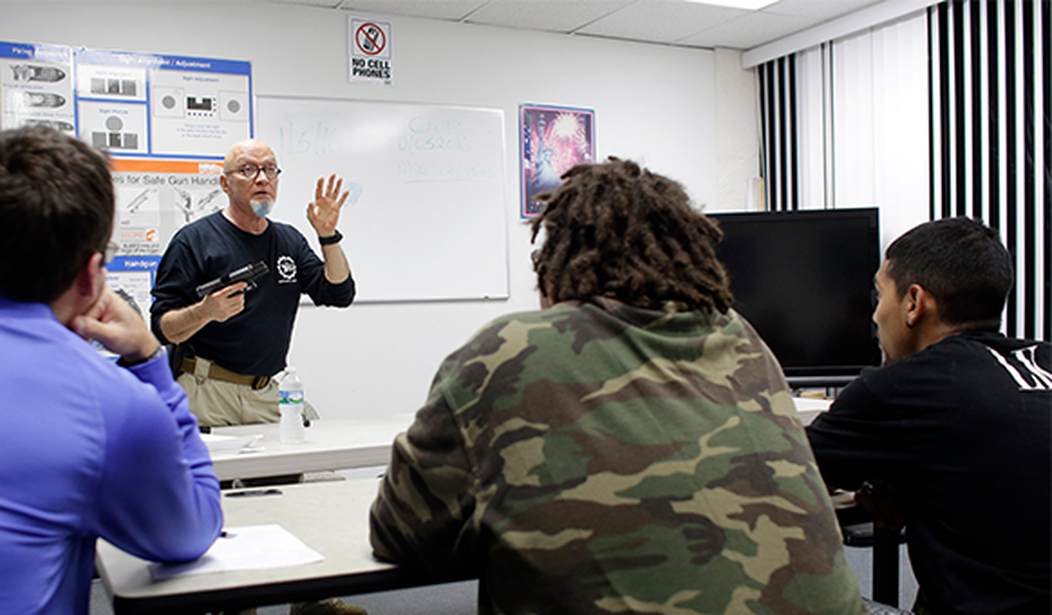When it comes to things like teaching math or English, I’m not going to pretend I have all the answers. I have some opinions, of course, such as killing Common Core forever and to stop making kids read so-called “important” books and just get kids reading, but I don’t pretend to be an expert in any of this stuff.
What I do know a few things about, though, are firearms.
As a parent, a gun writer, and a Second Amendment advocate, I have very strong opinions about how the topic of firearms should be handled in schools. Especially since the current efforts, such as they are, simply don’t seem to be cutting it in the least.
Instead, firearms need to be taught. While I have always believed that parents should be teaching their children about firearms, let’s be honest here. A lot of parents aren’t. In fairness, a lot of the parents don’t know anything about firearms themselves except what they see in the movies. They’re poorly equipped to teach their kids about much of anything.
What we need is to create an entire generation of kids who have been taught for years about firearms, where guns are demystified for children because of the near-constant exposure to them through school. If you want to make something less enticing to kids, turn it into homework.
Starting in kindergarten, students should receive their first exposure to firearms. That exposure, of course, should be limited. After all, these are small children and not every child is really ready for a day at the range. You have to focus on the “least common denominator” in a case like this, in other words, focus on the least prepared child and educate them.
At a young age, the best course of action is to teach these young kids what we currently teach kids. They should learn to stay away from the gun and to notify an adult if they find one.
Now, at this point you might be wondering why I’m bothering to write this at all. After all, I’m advising people to keep doing what they’re doing, right?
Not really. You see, I think the above advice is great for very young kids, but I don’t think that last very long. Recently, a parent of a teen who was killed when he was handing a firearm he knew nothing about stated she’d always told her kids that very thing. The problem is, that’s really only going to work on the very young.
As students get older, they’re going to be far more curious about these mystical devices called guns, the forbidden fruit of their friends’ parents nightstands. They’re going to be exposed to more movies and more television and more music all glorifying the firearm. They’re going to ignore that earlier advice.
So we need to equip them for this.
By late elementary school, gun safety should morph from “don’t touch” to “don’t touch, but if you have to, here’s what to do.” They should be taught how to check if a firearm is loaded. They should begin instruction in the Four Rules of Gun Safety. They should be shown the destructive power of firearms. They should become educated in the penalties for misuse of a firearm while also being told about all the ways to lawfully use one.
This kind of education should continue until high school or, perhaps, even middle school.
At that point, the curriculum should change a bit. In addition to all of this, they should also begin being instructed in marksmanship. They should be taught how to aim and fire both handguns and rifles. These can be done primarily through air guns as most schools lack the facilities for a true gun range, but the basics are the basics.
They should learn how to shoot from every standard position and even some of the more unusual ones. They should learn how to shoot offhand as well as with their strong side.
However, shooting an air gun won’t really prepare one for an actual firearm, so regular trips should be planned for a real gun range where live firearms are shot. These regular trips are necessary because to reduce the allure of guns as some kind of forbidden object. That plus students would need to get a feel for actual recoil.
Shooting should involve a variety of calibers and not be relegated to .22-caliber firearms. This, also, to prevent anything from becoming “forbidden.”
Now, I can already hear some of the criticism. After all, wouldn’t we be training mass shooters? Not really. School shooters are still remarkably rare and we’re talking about basic marksmanship. Carrying out a school shooting would require a variety of skills not being covered such as magazine changes. These are where mass shooters make mistakes. In the close-in environments of a school, marksmanship isn’t as much of an influence.
Of course, this raises the question of who would pay for this. Schools are routinely screaming about insufficient funding. School officials are constantly complaining about the need for more revenue even while just sticking with the basic subjects. How are they going to be expected to pay for this, especially at the upper levels where kids are shooting?
That, I feel, is where the Department of Defense comes in.
It would benefit the nation’s defense if we raised up entire generations of marksmen. That benefit would most be realized when the military is no longer having to spend as much time teaching people the basics of how to shoot and can, instead, work to make them more effective. The relatively small expenditure would easily benefit the nation’s defense.
While I haven’t actually crunched the numbers, just think of the number of air guns one can purchase for the cost of just on F-35. Actual firearms could be purchased at a fraction of the price the rest of us pay or could be funneled to schools through the Civilian Marksmanship Program.
Unfortunately, none of this will ever happen. At least, not in my lifetime. The hatred some have for guns is so visceral that they wouldn’t see the wisdom of exposing kids to guns to the point that they no longer hold the same allure. They would oppose this measure with every fiber of their being.
It would, however, just go to show that they’re not really serious about curbing firearm-related accidents, now wouldn’t it?








